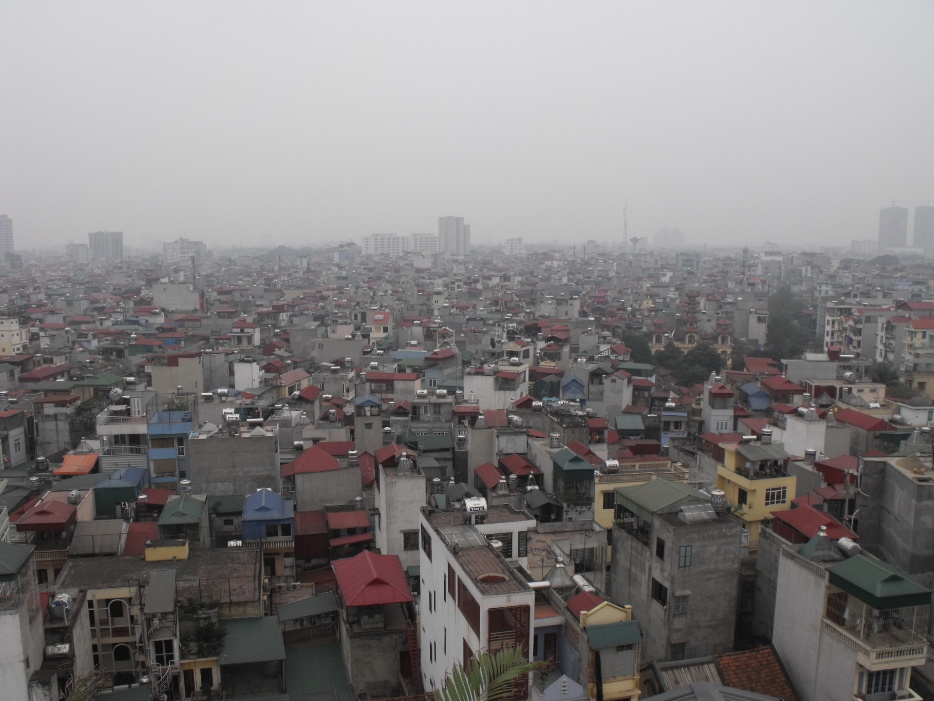First impressions probably aren’t Hanoi’s strongest suit. The haze of pollution stings the lungs, the humidity wears you out, and if you’re not accustomed to near-lawless motorbike traffic, you may be a bit tentative just crossing the street. Skies are overcast throughout the winter (though it doesn’t rain), and the temperatures are suffocating in the summer (with the added bonus of torrential downpours). The food? Well, it’s nothing like the Vietnamese food you’ve tasted in North America.
There is, however, one overarching quality that makes Hanoi a dynamic, entertaining, and generally fascinating place to visit: it’s raw.
Ever since Đổi Mới (an important set of economic reforms in Vietnam), the country that fought so hard for its own brand of Communism has been opening the doors to foreign (read: Western) investment wider and wider. Urbanization has been a rapid process, and, as in many other developing countries, large cities have struggled to keep up with the influx of migrants, and bizarre juxtapositions abound. What this means for you as a traveller is that you stand to be not only a witness to an interesting place, but an interesting place in time. Wait a few years, and you’ll have missed a unique point in Hanoi’s history. Blink, and you’ll have missed some type of interaction you’re unlikely to see anywhere else.
A woman in a conical hat balances her banana harvest on a yoke, as she rides slowly and steadily on a bicycle down a busy street. A wealthy man in a GMC Suburban, with his kids in the back seats playing on iPad 4’s is forced to drive at 10km/hr behind her because there’s no hope he’ll be able to pass her with such heavy traffic.
A Vietnam War veteran (or American War veteran, depending on your perspective) wears a pair of Nike sandals, and serves up cheap beer. His clients? A bunch of tourists who would be hard-pressed to better encompass all the silly stereotypes of Western wealth, decadence, and over-indulgence.
A megaphone blasts you from slumber, as news is broadcasted to the streets every morning. Friendly reminders from your local Communist party ask in Vietnamese that you ‘stay in shape, as obesity weighs heavily on our health care system’. Beer is 10 cents a glass and a pack of smokes costs a dollar.
This place is raw.
It is true that the well-known tourist attractions in Hanoi are well-known for good reasons. The “Hanoi Hilton” is worth checking out; if the veracity of some of the information they present is questionable, it’s all the more interesting. The Temple of Literature is a peaceful respite from the chaos that engulfs the rest of the city, and is worth the visit on that note alone. The Turtle Tower on Hoan Kiem Lake is picturesque, and a walk through either the French or Old Quarter will never disappoint. Don’t miss the Vietnam Museum of Ethnology (it’s worth the trek), or the Military History Museum, where you’re free to climb in and on all sorts of old, American war machines. Curious to see an embalmed communist leader? Go see Ho Chi Minh himself. In short, even if you’re only hitting the more well-worn tourist trails, you’ll find that: a) they aren’t nearly as well-worn as those of, say, Bangkok; and b), they’re all worthwhile.
If you’d really like to get a feel for the town’s frenetic energy however, there is no better way than to join in the ruckus yourself. Rent a motorbike and just drive for half a day. Honk your horn indiscriminately, and stay on your toes. You’ll begin to understand just how relentless the pace of Hanoi really is. All but the most tourist-oriented bars are closed by midnight, but it only adds to the excitement when you discover another late-night bia hoi or pho stand. If globalism has eroded any sense of the word “authentic” for you, rest assured that there remain oases of interest and genuine curiosity. Even a cursory Google search will tell you that it’s not always easy to find a good Hanoian dish, but the Northern Vietnamese gastronomy is only the tip of the proverbial iceberg.
Enjoy.
Make your next trip the best one.
Departful is a full service travel agency creating truly exceptional travel experiences that are 100% personalized to you. Wherever you’re going, whatever your interests, we help you plan the perfect trip.





